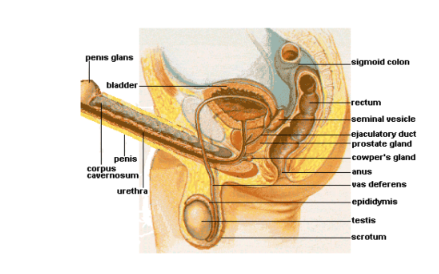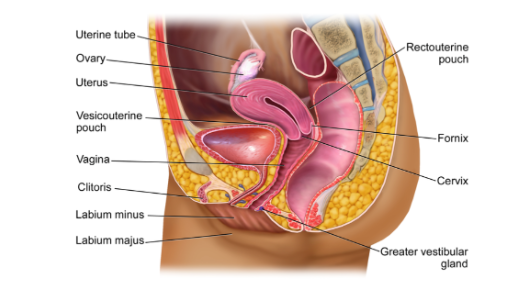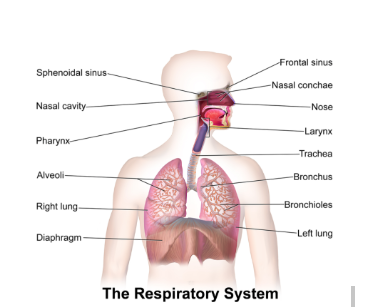Table of Contents
Introduction
The human body is a complex organism composed of different levels of organization, ranging from the smallest unit, the cell, to larger structures known as organ systems. Let’s explore the hierarchy of organization within the human body:
- Cells: Cells are the basic building blocks of life. They are the smallest functional and structural units of the body. There are various types of cells, including muscle cells, nerve cells, and skin cells, each with their own specialized functions.
- Tissues: Tissues are groups of similar cells that work together to perform a specific function. There are four primary types of tissues in the human body: epithelial tissue (covers and lines body surfaces), connective tissue (supports and connects different body parts), muscle tissue (enables movement), and nervous tissue (transmits electrical signals for communication).
- Organs: Organs are composed of two or more different types of tissues that work together to perform a specific function. Examples of organs include the heart, lungs, liver, and kidneys. Each organ has a specialized structure and function.
- Organ Systems: Organ systems are groups of organs that work together to perform a particular function and maintain homeostasis in the body. There are several major organ systems in the human body, including the circulatory system, respiratory system, digestive system, nervous system, musculoskeletal system, reproductive system, and more. Each system is responsible for specific functions necessary for the overall health and survival of the individual.
- Organism: At the highest level of organization is the organism, which refers to the complete individual living entity. It encompasses all the organ systems working together to maintain the functions required for life.
Human Physiology
Human physiology is the study of how the various systems and organs in the human body function and work together to maintain homeostasis, or the body’s internal balance. It involves the study of the physical, chemical, and biological processes that occur within the body to support life.
Key points about human physiology:
- Homeostasis: The body has mechanisms in place to regulate and maintain stable conditions, such as body temperature, blood pressure, and pH levels, to ensure optimal functioning.
- Organ Systems: The human body is composed of several organ systems that work together, including the circulatory system, respiratory system, digestive system, nervous system, and endocrine system, among others.
- Cell Function: Cells are the basic units of life, and human physiology examines the processes that occur within cells, such as metabolism, cell signaling, and transport of substances.
- Energy Production: The body uses various mechanisms to produce and utilize energy, such as cellular respiration, which involves the breakdown of nutrients to generate ATP (adenosine triphosphate), the energy currency of cells.
- Regulation and Control: Human physiology involves the study of how the body regulates and controls processes, such as hormone production and release, neural signaling, and feedback mechanisms.
- Integration: The different systems of the body are interconnected and work together to maintain overall physiological balance. For example, the cardiovascular system transports oxygen and nutrients to tissues, while the respiratory system supplies oxygen and removes carbon dioxide.
- Adaptation and Response: Human physiology also explores how the body adapts and responds to internal and external stimuli, such as stress, exercise, and environmental changes.
Human Body Parts and Their Function
The human body is a complex organism composed of various parts that work together to maintain vital functions. Here are some of the major body parts and their functions:
Brain: The brain is the command center of the body, responsible for controlling all bodily functions, thoughts, emotions, and movements.
- Heart: The heart pumps oxygenated blood throughout the body, supplying tissues and organs with oxygen and nutrients.
- Lungs: The lungs facilitate the exchange of oxygen and carbon dioxide, allowing for the process of respiration.
- Liver: The liver is involved in detoxification, metabolism of nutrients, production of bile, and storage of vitamins and minerals.
- Stomach: The stomach is responsible for breaking down food through mechanical and chemical digestion, using enzymes and stomach acids.
- Intestines: The small and large intestines are involved in absorbing nutrients from digested food and eliminating waste from the body.
- Kidneys: The kidneys filter waste products and excess water from the blood, producing urine and maintaining fluid and electrolyte balance.
- Skin: The skin is the largest organ of the body and serves as a protective barrier against pathogens, regulates body temperature, and contains sensory receptors.
- Muscles: Muscles enable movement and provide support to the skeletal system. They also play a role in maintaining posture and generating heat.
- Bones: Bones provide structure, support, and protection for the body. They also serve as storage sites for minerals like calcium and phosphate.
- Nerves: Nerves transmit electrical signals throughout the body, allowing for communication between different body parts and the brain.
- Reproductive Organs: These organs, such as the uterus, ovaries, testes, and penis, are involved in reproduction and the production of sex hormones.
Circulatory System
The circulatory system, also known as the cardiovascular system, is responsible for the circulation of blood and transport of essential substances throughout the body. Here are some key points about the circulatory system:
- Heart: The heart is the central organ of the circulatory system. It pumps oxygenated blood to the body’s tissues and organs and receives deoxygenated blood from them.
- Blood vessels: The circulatory system includes a network of blood vessels, including arteries, veins, and capillaries. Arteries carry oxygenated blood away from the heart, while veins carry deoxygenated blood back to the heart. Capillaries are tiny blood vessels that allow for the exchange of gases, nutrients, and waste products between the blood and surrounding tissues.
- Blood: Blood is a specialized fluid that carries oxygen, nutrients, hormones, and waste products throughout the body. It consists of red blood cells, white blood cells, platelets, and plasma.
- Oxygen transport: The circulatory system transports oxygen from the lungs to the body’s tissues. Oxygen binds to red blood cells and is carried by them through the arteries.
- Nutrient transport: The circulatory system delivers nutrients absorbed from the digestive system to the body’s cells. These nutrients include glucose, amino acids, vitamins, and minerals necessary for cellular metabolism and function.
- Waste removal: The circulatory system removes waste products, such as carbon dioxide and metabolic waste, from the body’s cells. Carbon dioxide is transported back to the lungs to be exhaled.
- Immune response: The circulatory system plays a crucial role in the body’s immune response. White blood cells, part of the immune system, are transported in the bloodstream and can identify and eliminate pathogens or foreign substances.
- Regulation of body temperature: Blood flow helps regulate body temperature. When the body is too hot, blood vessels dilate, allowing for heat dissipation through the skin. When the body is too cold, blood vessels constrict, reducing heat loss.
- Blood pressure regulation: The circulatory system helps regulate blood pressure, ensuring adequate blood flow to organs and tissues. The contraction and relaxation of the heart and the dilation and constriction of blood vessels play a role in maintaining blood pressure.
- Hormone transport: Hormones secreted by various glands are transported through the bloodstream to target organs and tissues, where they regulate physiological processes.

The circulatory system is essential for the overall functioning and health of the body, ensuring the delivery of oxygen, nutrients, and other necessary substances to cells while removing waste products. It is a complex and interconnected system that supports various bodily functions.
Digestive System
The digestive system is responsible for the breakdown, absorption, and processing of food in the human body. It involves several organs and processes that work together to ensure proper digestion and nutrient absorption. Here are some key points about the digestive system:
- Mouth: Digestion begins in the mouth, where food is mechanically broken down by chewing and mixed with saliva containing enzymes that initiate the breakdown of carbohydrates.
- Esophagus: The esophagus is a muscular tube that carries the chewed food from the mouth to the stomach through a process called swallowing.
- Stomach: The stomach receives food from the esophagus and continues the process of mechanical and chemical digestion. It secretes gastric juices containing enzymes and acids that break down proteins and kill bacteria.
- Small Intestine: The small intestine is the primary site for nutrient absorption. It is divided into three parts: duodenum, jejunum, and ileum. Digestive enzymes from the pancreas and bile from the liver aid in the breakdown of carbohydrates, proteins, and fats. Nutrients are absorbed through the intestinal walls into the bloodstream.
- Liver: The liver plays a vital role in digestion by producing bile, which helps in the digestion and absorption of fats. It also detoxifies harmful substances and stores nutrients.
- Gallbladder: The gallbladder stores bile produced by the liver and releases it into the small intestine when fat is present, aiding in the digestion and absorption of fats.
- Pancreas: The pancreas produces digestive enzymes that are released into the small intestine to further break down carbohydrates, proteins, and fats. It also produces insulin and glucagon, hormones involved in regulating blood sugar levels.
- Large Intestine: The large intestine, consisting of the colon and rectum, absorbs water and electrolytes from undigested food, forming feces. It also houses beneficial bacteria that aid in the digestion of certain nutrients and produce certain vitamins.
- Rectum and Anus: The rectum stores feces until they are eliminated from the body through the anus during the process of defecation.
- Peristalsis: Throughout the digestive system, rhythmic contractions called peristalsis propel food and waste materials along the digestive tract.
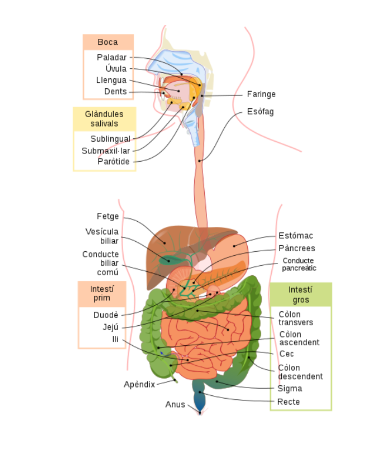
The digestive system plays a crucial role in breaking down food into nutrients that can be absorbed and utilized by the body. It ensures the supply of energy and essential nutrients for bodily functions, growth, and repair. Proper digestion is essential for overall health and well-being.
Reproductive System
The reproductive system in humans is responsible for the production of offspring and continuation of the species. It involves both male and female reproductive organs that work together for sexual reproduction.
Here are some key points about the reproductive system:
Male Reproductive System:
- Testes: The testes are responsible for producing sperm cells and the hormone testosterone.
- Epididymis: Sperm cells mature and are stored in the epididymis.
- Vas Deferens: The vas deferens carries mature sperm from the epididymis to the urethra.
- Seminal Vesicles, Prostate Gland, and Bulbourethral Glands: These accessory glands produce seminal fluid, which nourishes and helps transport sperm during ejaculation.
- Urethra: The urethra carries both urine and semen out of the body through the penis.

Female Reproductive System:
- Ovaries: The ovaries produce eggs (ova) and female sex hormones such as estrogen and progesterone.
- Fallopian Tubes: The fallopian tubes transport eggs from the ovaries to the uterus. Fertilization of the egg by sperm usually occurs in the fallopian tubes.
- Uterus: The uterus is a muscular organ where a fertilized egg implants and develops into a fetus.
- Cervix: The cervix is the lower part of the uterus that connects it to the vagina.
- Vagina: The vagina is a muscular canal that serves as the birth canal during childbirth and also receives the penis during sexual intercourse.
Reproduction and Fertilization:
- Sexual Intercourse: The union of sperm and egg occurs during sexual intercourse.
- Fertilization: Fertilization occurs when a sperm cell penetrates and fertilizes an egg, forming a zygote.
- Pregnancy: If fertilization is successful, the fertilized egg implants in the uterus and develops into a fetus during pregnancy.
- Menstrual Cycle: In females, the menstrual cycle prepares the uterus for potential pregnancy, with the shedding of the uterine lining occurring if fertilization does not occur.
Respiratory System
The respiratory system in humans is responsible for the exchange of gases, specifically oxygen and carbon dioxide, between the body and the environment. Here are some key points about the respiratory system:
Nasal Cavity:
- Air enters the respiratory system through the nostrils and passes through the nasal cavity.
- The nasal cavity is lined with mucous membranes that help filter, warm, and humidify the air.
Pharynx and Larynx:
- The pharynx, also known as the throat, serves as a common pathway for both air and food.
- The larynx, or voice box, contains the vocal cords and is involved in speech production.
Trachea:
- The trachea, or windpipe, is a tube that connects the larynx to the bronchi.
- It is composed of cartilage rings that provide structural support and prevents collapse.
Bronchial Tree:
- The trachea branches into two bronchi, one leading to each lung.
- The bronchi further divide into smaller bronchioles, which eventually end in tiny air sacs called alveoli.
Alveoli:
- Alveoli are the site of gas exchange in the respiratory system.
- Oxygen from the inhaled air diffuses into the bloodstream, while carbon dioxide produced by the body cells diffuses out into the alveoli to be exhaled.
Diaphragm:
- The diaphragm is a dome-shaped muscle that separates the chest cavity from the abdominal cavity.
- It plays a crucial role in breathing by contracting and relaxing to create changes in lung volume and air pressure.
Breathing Process
- Inhalation: The diaphragm contracts and moves downward, expanding the chest cavity. This creates a vacuum that pulls air into the lungs.
- Exhalation: The diaphragm relaxes and moves upward, decreasing the chest cavity volume. This forces air out of the lungs.
Gas Exchange and Transport
- Oxygen binds to red blood cells in the lungs and is transported throughout the body.
- Carbon dioxide, a waste product, is carried by the bloodstream back to the lungs to be exhaled.
The respiratory system is vital for supplying oxygen to the body’s cells and removing carbon dioxide, a waste product of cellular metabolism. It ensures the proper functioning of other body systems and supports overall health and well-being.

Nervous System
The nervous system in humans is responsible for coordinating and controlling the activities of the body. It consists of the central nervous system (CNS), which includes the brain and spinal cord, and the peripheral nervous system (PNS), which consists of nerves that connect the CNS to the rest of the body. Here are some key points about the nervous system:
Brain
- The brain is the command center of the nervous system and controls all bodily functions.
- It is divided into different regions, each responsible for specific functions such as thinking, memory, movement, and sensory perception.
Spinal Cord
- The spinal cord is a long, tubular structure that runs from the base of the brain down the back.
- It acts as a communication pathway between the brain and the rest of the body and controls reflex actions.
Nerves
- Nerves are fibers that transmit signals between the brain, spinal cord, and the rest of the body.
- They can be sensory nerves, which carry information from sensory receptors to the brain, or motor nerves, which transmit signals from the brain to muscles and organs.
Central Nervous System (CNS)
- The CNS consists of the brain and spinal cord.
- It processes and integrates information from the body and coordinates responses.
Peripheral Nervous System (PNS)
- The PNS includes all nerves outside the brain and spinal cord.
- It connects the CNS to the body’s organs, muscles, and sensory receptors.
Autonomic Nervous System (ANS)
- The ANS regulates involuntary processes in the body, such as heart rate, digestion, and breathing.
- It is further divided into the sympathetic and parasympathetic divisions, which have opposing effects on bodily functions.
Sensory and Motor Functions
- The nervous system receives sensory input from various sensory organs and transmits it to the brain for processing.
- It also controls voluntary and involuntary muscle movements through motor neurons.
Communication and Coordination
- The nervous system allows for rapid communication and coordination between different parts of the body.
- It enables us to sense and respond to our environment, maintain balance and posture, and carry out complex cognitive processes.
The nervous system is crucial for our ability to perceive the world, process information, control bodily functions, and respond to stimuli. It plays a fundamental role in maintaining homeostasis and supporting our overall physical and cognitive functions.
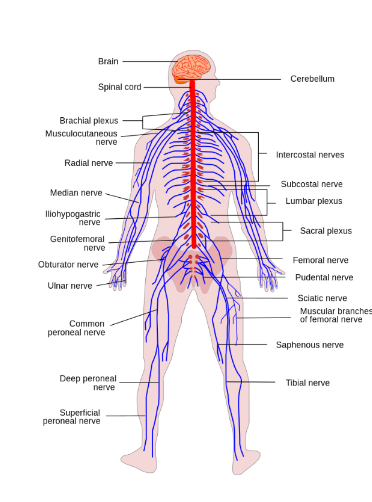
FAQs on Human Body Anatomy
How would you define human anatomy?
The study of an object's structure is called anatomy. The study of human anatomy focuses on how a person's constituent parts work together to make a useful whole.
What do you mean when you refer to human physiology?
The mechanical, biological, and physical functions of people are studied in human physiology. It is the cornerstone of contemporary medicine. It is the study of how human organs work.
Who founded the science of human physiology?
The father of human physiology is Claude Bernard. He is also credited with founding contemporary experimental Physiology.
What significance does human physiology have?
Our understanding of life is built upon the principles of human physiology. Knowing how to treat illnesses and deal with the stress that various settings place on us is beneficial.
Who founded the study of human anatomy?
The father of human anatomy is thought to be Andreas Vesalius. He was born in Belgium into a medical family. Andreas Vesalius' Fabrica, considered to be his best work, received widespread acclaim.
What various forms of anatomy are there?
Gross anatomy and microscopic anatomy are two different forms of anatomy. Microscopic anatomy deals with items that can only be seen under a microscope, while gross anatomy deals with those that can be seen with the unaided eye.
What relevance does human anatomy have?
Understanding the structure and interrelationships of all the body's parts is made easier by studying human anatomy. Knowing the features of the various body components is also beneficial.
What are the differences between anatomy and physiology?
While physiology investigates the activities and interactions of bodily parts, anatomy teaches us about the structure of the various body parts.
Which bodily organs are the most crucial?
The brain, lungs, heart, kidney, liver, stomach, intestines, and bladder are among the body's major organs.
What various bodily systems are there?
The various systems of our body include the neurological system, muscular system, skeletal system, respiratory system, excretory system, digestive system, and endocrine system.






